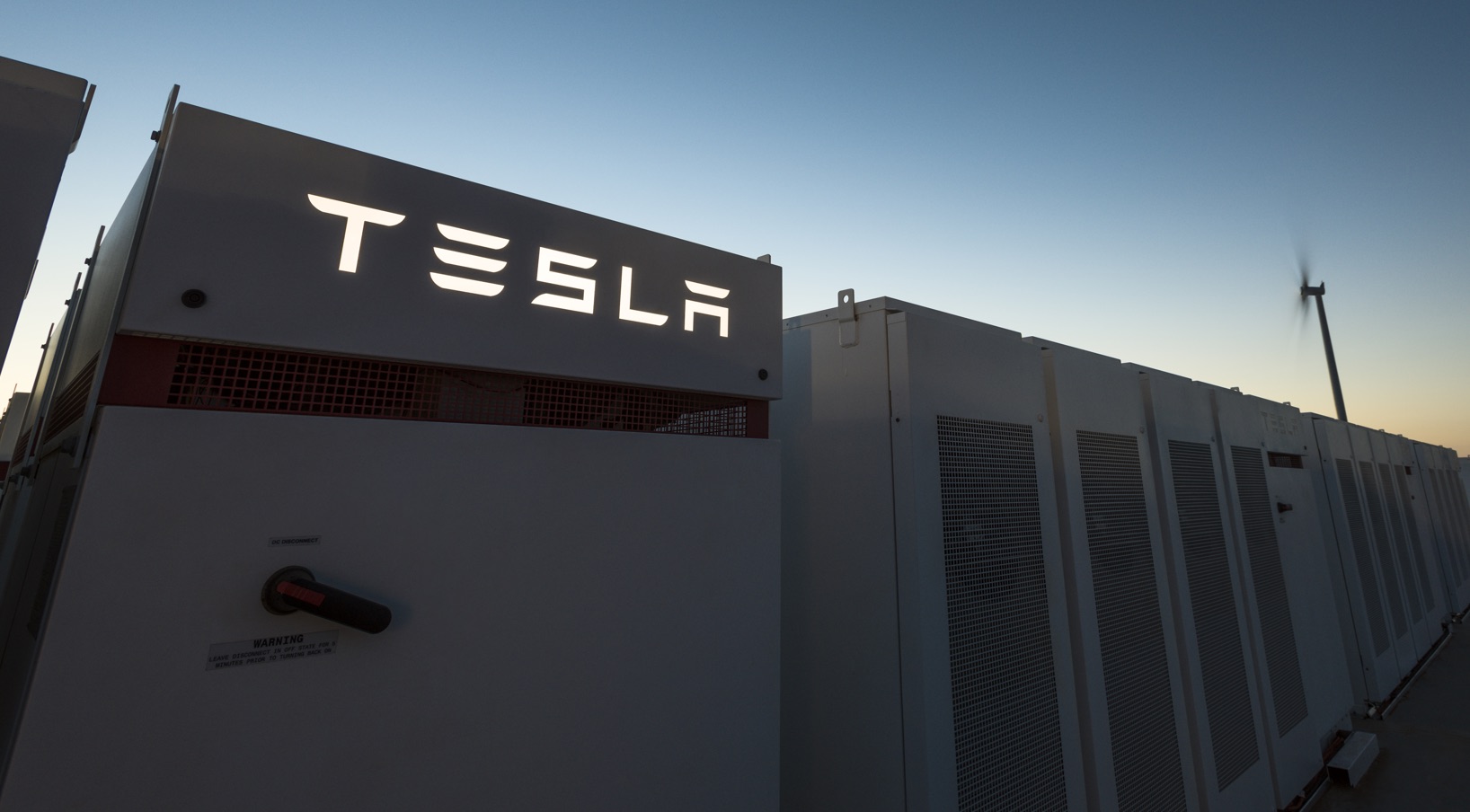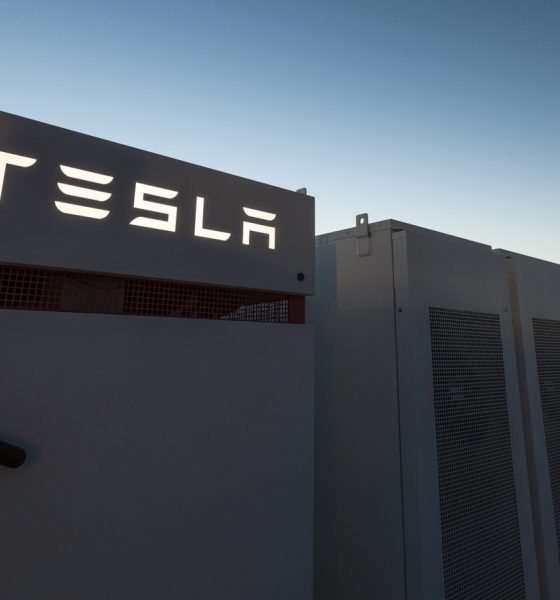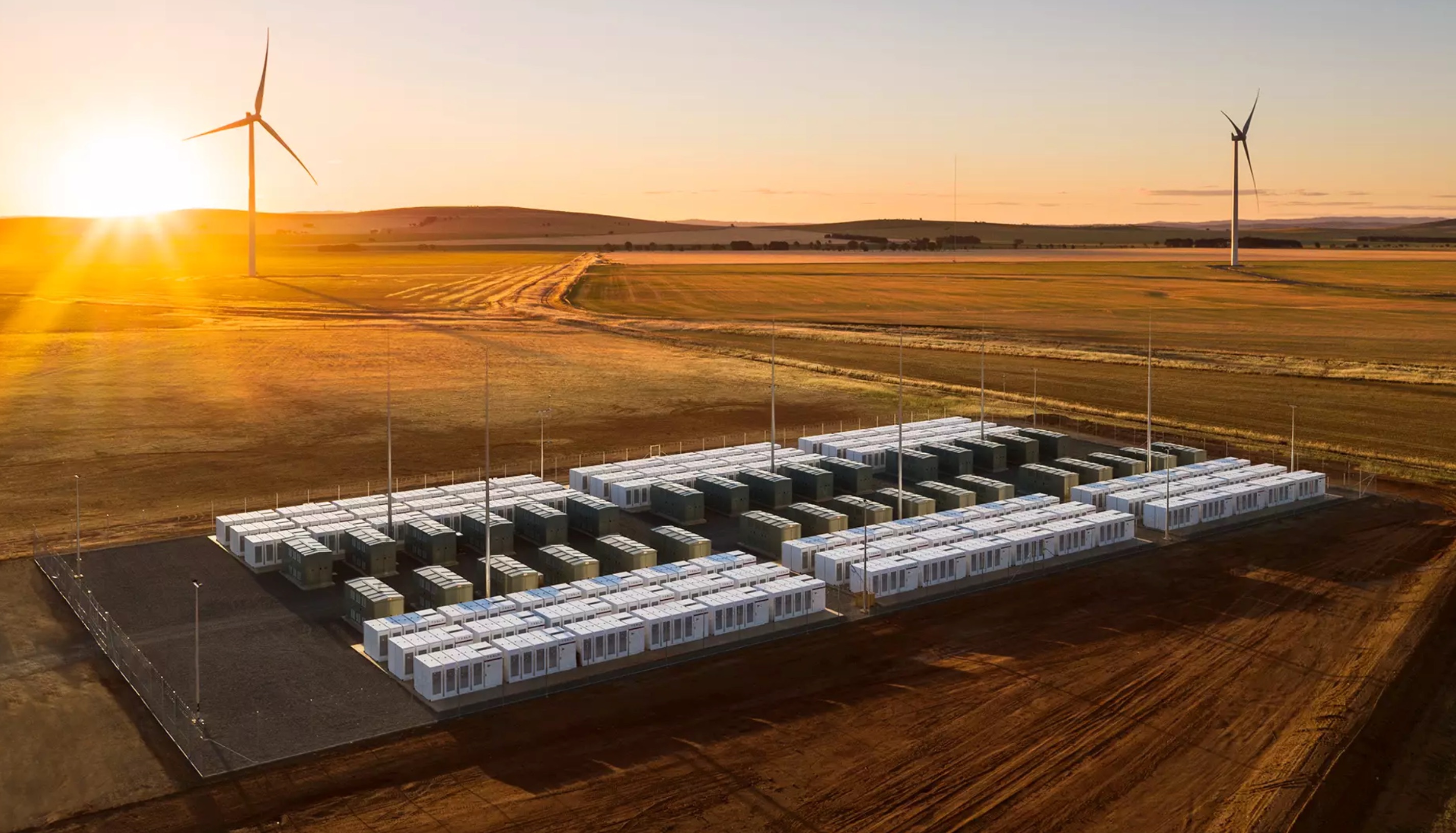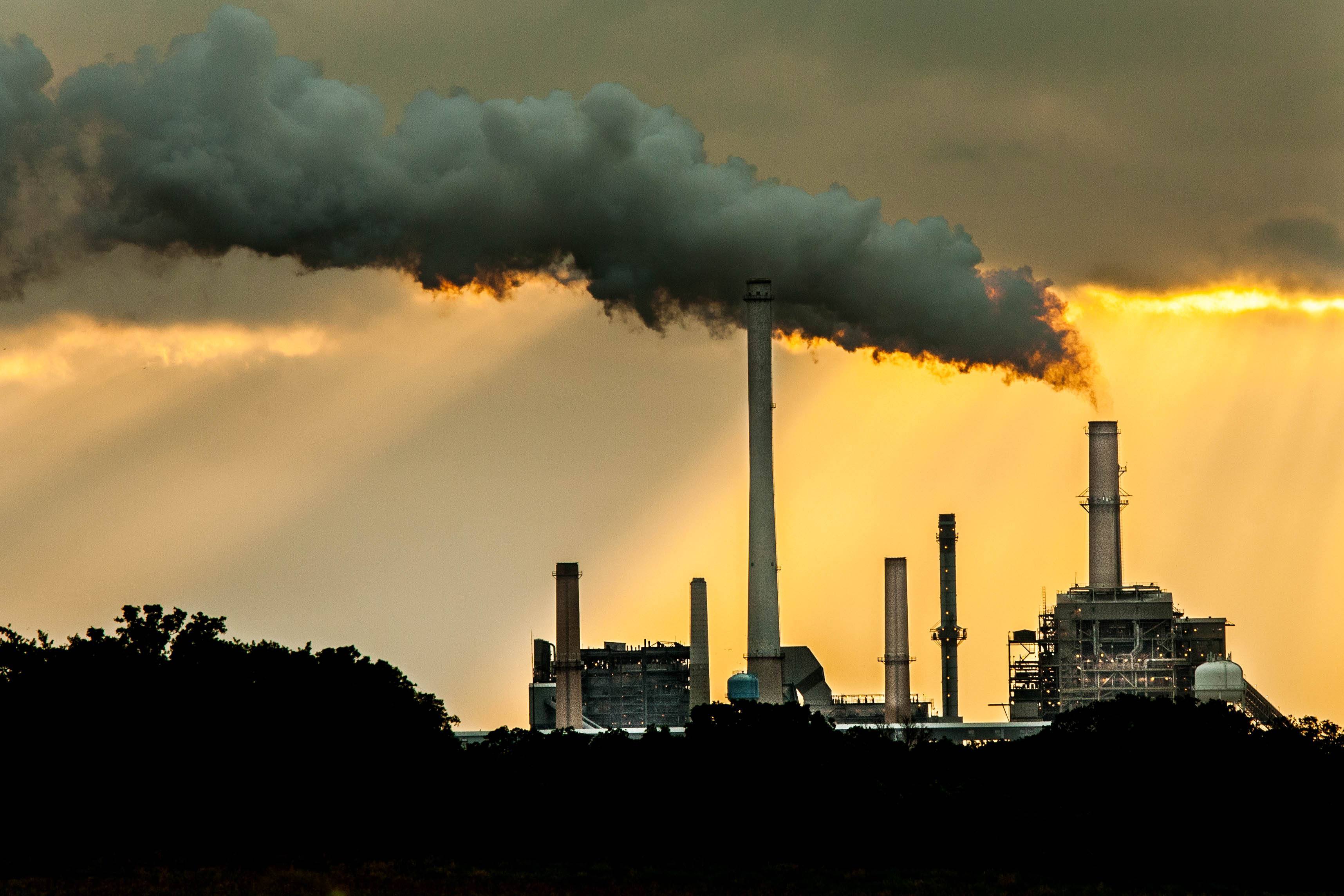

Energy
Tesla Energy is quietly setting its sights on peaker plants
Behind the spotlights trained on the Model 3 production ramp and Elon Musk’s online behavior, Tesla’s Energy business is quietly growing and spreading its reach. Tesla notes that its deployment of stationary batteries, which are designed to supply electricity to residential homes, businesses, and even the power grid, surged 450% in the first six months of 2018 alone. These figures are well in line with Elon Musk’s statement during the Q2 2018 earnings call, when he noted that Tesla Energy is growing at such a pace that it would likely catch up and exceed the company’s electric car business in the future.
During the 2018 Annual Shareholder Meeting, Elon Musk announced that Tesla managed to hit a milestone of installing 1 GWh of energy storage to projects worldwide. This is only the beginning, though, as the company is aiming to double its battery storage installations within the next 12 months. Just like its electric cars like the Model 3, Tesla’s energy products like the Powerwall 2 home battery system are seeing overwhelming demand from customers — so much so that installations for the products are quite delayed. In Tesla’s website alone, the company notes that new Powerwall 2 orders would likely not be filled until “late 2018” at the earliest.
Despite the company currently being unable to meet production, Tesla CTO JB Straubel noted in a recent statement to the San Francisco Chronicle that Tesla’s battery production would likely catch up early next year. Straubel stated that while Tesla is scaling production as fast as it could, there are still delays as the demand for the residential market continues to be larger than expected. Demand from utility providers has remained strong as well. Back in June, for example, the company landed a contract with Pacific Gas and Electric Co. to install its industrial-grade Powerpack batteries to store 730 MWh of electricity in Moss Landing; and that’s just one of several high-profile projects that the company is engaged in.
Tesla’s Powerpack farm in South Australia. 
Tesla’s energy storage solutions are starting become more and more accepted by utility companies, particularly since battery technology has reached a point where it now has the potential to replace inefficient and dirty “Peaker” power plants, which are powered on when the demand for electricity is at its highest. Straubel believes that battery solutions such as those offered by Tesla Energy are poised to outcompete conventional peaker plants.
“I think what we’ll see is we won’t build many new peaker plants, if any. Already what we’re seeing happening is the number of new ones being commissioned is drastically lower, and batteries are already outcompeting natural gas peaker plants,” Straubel said.
Tesla Energy’s initiative to eventually replace peaker power plants is very similar to the company’s efforts to render fossil fuel-powered automobiles obsolete. Elon Musk is known to have said that Tesla will not stop “until every car on the road is electric.” Considering the CTO’s recent statements, it appears that Tesla Energy would likely not stop until all backup power plants are powered by renewable energy as well.
Tesla will actually be doing the world a favor if its Energy business ends up helping in the transition of the power industry away from peaker plants. Peaker plants, after all, are responsible for a lot of pollution. A case study of the facilities in CA cited by the Clean Energy Group noted that peaker plants emit roughly 30% more carbon dioxide per megawatt-hour than natural gas combined-cycle plants, which are increasingly being used as base load plants. The case study also noted that 84% of peaker plants are located in areas that are vulnerable to environmental damage. On top of this, peaker plants are actually quite costly for consumers, considering that they are utilized when demand for electricity is at its highest.

Tesla Energy’s goal of eventually replacing peaker plants might be ambitious, but it is not impossible, especially since the United States’ energy storage business has been seeing growth over the past years. A study from GTM Research, for one, estimates that the sales of energy storage for both residential and utility markets in the US would likely hit $541 million this year, before passing $1 billion in 2019, and hitting $4.6 billion in 2023. If Tesla can ramp its energy business within the coming years, the company could position itself strategically in what could very well be an upcoming energy gold rush.
Tesla’s energy business usually takes a back seat to the company’s electric car division, but the updates that the company has teased regarding its battery technology are very encouraging. During the 2018 Annual Shareholder Meeting, for one, Elon Musk mentioned that Tesla is now aiming to hit a cost of $100 per kWh at the pack level.
“We think at the cell level probably we can do better than $100/kWh maybe later this year depending upon stable commodity prices. With further improvements to the cell chemistry, the production process, and more vertical integration on the cell side, for example, integrating the production of cathode and anode materials at the Gigafactory, and improved design of the module and pack, we think long-term we can get below $100/kWh at the pack level,” he said.

Cybertruck
Tesla updates Cybertruck owners about key Powershare feature

Tesla is updating Cybertruck owners on its timeline of a massive feature that has yet to ship: Powershare with Powerwall.
Powershare is a bidirectional charging feature exclusive to Cybertruck, which allows the vehicle’s battery to act as a portable power source for homes, appliances, tools, other EVs, and more. It was announced in late 2023 as part of Tesla’s push into vehicle-to-everything energy sharing, and acting as a giant portable charger is the main advantage, as it can provide backup power during outages.
Cybertruck’s Powershare system supports both vehicle-to-load (V2L) and vehicle-to-home (V2H), making it flexible and well-rounded for a variety of applications.
However, even though the feature was promised with Cybertruck, it has yet to be shipped to vehicles. Tesla communicated with owners through email recently regarding Powershare with Powerwall, which essentially has the pickup act as an extended battery.
Powerwall discharge would be prioritized before tapping into the truck’s larger pack.
However, Tesla is still working on getting the feature out to owners, an email said:
“We’re writing to let you know that the Powershare with Powerwall feature is still in development and is now scheduled for release in mid-2026.
This new release date gives us additional time to design and test this feature, ensuring its ability to communicate and optimize energy sharing between your vehicle and many configurations and generations of Powerwall. We are also using this time to develop additional Powershare features that will help us continue to accelerate the world’s transition to sustainable energy.”
Owners have expressed some real disappointment in Tesla’s continuous delays in releasing the feature, as it was expected to be released by late 2024, but now has been pushed back several times to mid-2026, according to the email.
Foundation Series Cybertruck buyers paid extra, expecting the feature to be rolled out with their vehicle upon pickup.
Cybertruck’s Lead Engineer, Wes Morrill, even commented on the holdup:
As a Cybertruck owner who also has Powerwall, I empathize with the disappointed comments.
To their credit, the team has delivered powershare functionality to Cybertruck customers who otherwise have no backup with development of the powershare gateway. As well as those with solar…
— Wes (@wmorrill3) December 12, 2025
He said that “it turned out to be much harder than anticipated to make powershare work seamlessly with existing Powerwalls through existing wall connectors. Two grid-forming devices need to negotiate who will form and who will follow, depending on the state of charge of each, and they need to do this without a network and through multiple generations of hardware, and test and validate this process through rigorous certifications to ensure grid safety.”
It’s nice to see the transparency, but it is justified for some Cybertruck owners to feel like they’ve been bait-and-switched.
Energy
Tesla starts hiring efforts for Texas Megafactory
Tesla’s Brookshire site is expected to produce 10,000 Megapacks annually, equal to 40 gigawatt hours of energy storage.

Tesla has officially begun hiring for its new $200 million Megafactory in Brookshire, Texas, a manufacturing hub expected to employ 1,500 people by 2028. The facility, which will build Tesla’s grid-scale Megapack batteries, is part of the company’s growing energy storage footprint.
Tesla’s hiring efforts for the Texas Megafactory are hinted at by the job openings currently active on the company’s Careers website.
Tesla’s Texas Megafactory
Tesla’s Brookshire site is expected to produce 10,000 Megapacks annually, equal to 40 gigawatt hours of energy storage, similar to the Lathrop Megafactory in California. Tesla’s Careers website currently lists over 30 job openings for the site, from engineers, welders, and project managers. Each of the openings is listed for Brookshire, Texas.
The company has leased two buildings in Empire West Business Park, with over $194 million in combined property and equipment investment. Tesla’s agreement with Waller County includes a 60% property tax abatement, contingent on meeting employment benchmarks: 375 jobs by 2026, 750 by 2027, and 1,500 by 2028, as noted in a report from the Houston Business Journal. Tesla is required to employ at least 1,500 workers in the facility through the rest of the 10-year abatement period.
Tesla’s clean energy boom
City officials have stated that Tesla’s arrival marks a turning point for the Texas city, as it highlights a shift from logistics to advanced clean energy manufacturing. Ramiro Bautista from Brookshire’s economic development office, highlighted this in a comment to the Journal.
“(Tesla) has great-paying jobs. Not just that, but the advanced manufacturing (and) clean energy is coming to the area,” he said. “So it’s not just your normal logistics manufacturing. This is advanced manufacturing coming to this area, and this brings a different type of job and investment into the local economy.”
Energy
Tesla and Samsung SDI in talks over new US battery storage deal: report
The update was related by industry sources and initially reported by South Korean news outlets.

Recent reports have suggested that Tesla and Samsung SDI are in talks over a potential partnership to supply batteries for large-scale energy storage systems (ESS).
The update was related by industry sources and initially reported by South Korean news outlets.
ESS batteries to be built at Samsung’s Indiana plant
As noted in a report from Korea JoongAng Daily, the demand for energy storage systems has been growing rapidly in North America, thanks in no small part to the surge in AI investments across numerous companies. With this in mind, Tesla has reportedly approached Samsung SDI about a potential battery supply deal.
The deal is reportedly worth over 3 trillion Korean won (approximately $2.11 billion) and will span three years, according to The Korea Global Economic Daily. A battery supply deal with Samsung SDI could make sense for Tesla as the company already has a grid-scale battery, the Megapack, which is perfect for industrial use. Samsung SDI could simply supply cells for the EV maker.
Production of the batteries would reportedly take place at Samsung SDI’s joint venture factory with Stellantis in Indiana, which is currently under construction. Samsung SDI recently announced plans to use part of that plant’s EV lines to produce cells for ESS, with a targeted capacity of 30 GWh by the end of next year.
Tesla and Samsung’s partnership
At present, only a handful of manufacturers, including Korea’s LG Energy Solution, Samsung SDI, SK On, and Japan’s Panasonic, are capable of producing energy storage-scale batteries domestically in the United States. A Samsung SDI official issued a comment about the matter, stating, “Nothing has been finalized regarding cooperation with Tesla.”
The possible energy storage system deal adds another layer to Tesla’s growing collaboration with Samsung, which is already in line as a partner in the upcoming production of Tesla’s AI5 and AI6 chips. Early sample manufacturing of the AI6 is expected to begin in South Korea, with mass production slated for Samsung’s Texas-based Taylor foundry when it starts operations.
The AI6 chip will power Tesla’s next wave of high-volume projects, including the Optimus humanoid robot and the autonomous Cybercab service. Musk has called the partnership with Samsung a “real collaboration,” adding that he personally plans to “walk the line” at the Taylor facility to speed up progress.








